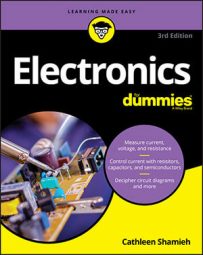Switches in electronics are categorized by how many connections they make when you "flip the switch" and exactly how those connections are made. A switch can have one or more poles, or sets of input contacts: A single-pole switch has one input contact, whereas a double-pole switch has two input contacts.
A switch can also have one or more conducting positions, or throws. With a single-throw switch, you either make or break the connection between each input contact and its designated output contact; a double-throw switch allows you to alter the connection of each input contact between each of its two designated output contacts.
Sound confusing? To help clear things up, take a look at the circuit symbols and descriptions of some common switch varieties:
Single-pole, single-throw (SPST): This is your basic on/off switch, with one input contact and one output contact, for a total of two terminals that connect to your circuit. You either make the connection (switch on) or break the connection (switch off).
Single-pole, double-throw (SPDT): This on/on switch contains one input contact and two output contacts (so it has three terminals). It switches the input between two choices of outputs. You use an SPDT switch, or changeover switch, when you want to have a circuit turn one device or another on (for example, a green light to let people know they can enter a room, or a red light to tell them to stay out).
Double-pole, single-throw (DPST): This dual on/off switch contains four terminals — two input contacts and two output contacts — and behaves like two separate "make-or-break" SPST switches operating in sync. In the off position, both switches are open and no connections are made. In the on position, both switches are closed and connections are made between each input contact and its corresponding output contact.
Double-pole, double-throw (DPDT): This dual on/on switch contains two input contacts and four output contacts (for a total of six terminals), and behaves like two SPDT (changeover) switches operating in sync. In one position, the two input contacts are connected to one set of output contacts. In the other position, the two input contacts are connected to the other set of output contacts. Some DPDT switches have a third position, which disconnects (or breaks) all contacts.
You can use a DPDT switch as a reversing switch for a motor, connecting the motor to positive voltage to turn one way, negative voltage to turn the other way, and, if there is a third switch position, zero voltage to stop turning.
 Circuit symbols for single-pole, single-throw (SPST), single-pole, double-throw (SPDT), double-pole, single-throw (DPST), and double-pole, double-throw (DPDT) switches.
Circuit symbols for single-pole, single-throw (SPST), single-pole, double-throw (SPDT), double-pole, single-throw (DPST), and double-pole, double-throw (DPDT) switches.

